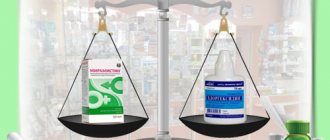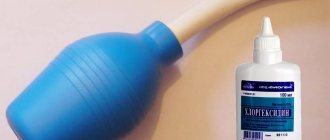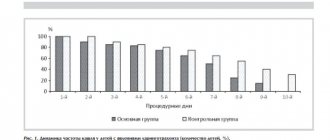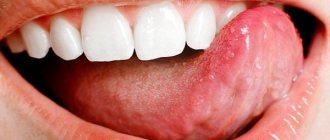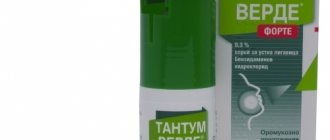Miramistin is an unremarkable bottle with a spray nozzle. But he can do so many things! If you look at the list of indications, we can say that the drug helps with literally everything. From anything that is infectious in nature. Or is about to become one. Burns, wounds, viruses, operations and much more are the scope of application of Miramistin. It relieves inflammation and has an antimicrobial effect. It is especially pleasant that the simple composition is characterized by a virtual absence of contraindications or adverse reactions, and the drug can be prescribed from birth.
Miramistin copes well with burns
What does Miramistin protect against?
The effect of the drug is detrimental to:
- Many aerobic and anaerobic gram-positive and gram-negative microorganisms.
- A number of pathogenic fungi, including yeast and yeast-like fungi.
- Some viruses, in particular the herpes virus.
- Most pathogens that cause sexually transmitted infections: chlamydia, trichomonas, gonococci, etc.
Among other things, the drug also affects hospital strains of pathogenic bacteria that are highly resistant to antimicrobial therapy. Therefore, Miramistin in such cases helps to increase the effectiveness of antibiotic therapy.
What is Miramistin used for?
The drug is widely used by doctors of several specialties:
- Traumatologists and surgeons use the solution to prevent the suppurative process, as well as to treat purulent wounds.
- Obstetricians and gynecologists prescribe Miramistin for the treatment of postpartum and postoperative sutures, as well as as part of the treatment of inflammatory diseases of the female genital organs.
- Dermatovenerologists use the product for the auxiliary treatment of fungal diseases such as dermatomycosis and mucosal candidiasis.
- Urologists treat acute and chronic urethritis and urethroprostatitis with Miramistin.
- ENT doctors prescribe the drug as part of complex therapy for tonsillitis, laryngitis, otitis, and inflammatory diseases of the sinuses.
- Dentists use the solution to treat stomatitis, gingivitis, and periodontitis. Miramistin is also a means of preventing inflammatory diseases of the oral cavity.
The drug is also used to treat burns and for antiseptic treatment of wounds before dermatoplasty.
Finally, Miramistin is a popular and very effective means for individual prevention of sexually transmitted diseases.
Description
Miramistin is a domestic broad-spectrum antiseptic drug that is used for the prevention and treatment of bacterial, fungal and viral infections. Initially, the drug was intended to disinfect compartments on Soviet spaceships and stations. And now Miramistin has shown itself to be excellent in the prevention and therapeutic treatment of wounds, purulent-septic processes, the appearance of which accompanies surgery and traumatology. Miramistin effectively fights pathogenic microorganisms, therefore it is applicable in gynecology, urology, dentistry, otolaryngology and other branches of medicine.
But you should not think that Miramistin simply has an antimicrobial effect; it is quite strong and fights even those strains that are insensitive to other antibiotics. Miramistin interacts with ascomycetes, yeast and yeast-like fungi, dermatophytes, and some other pathogenic fungi. And what is especially important, Miramistin is able to influence human immunodeficiency viruses, herpes, etc. That is, demonstrate an antiviral effect. The medicine is also quite active against pathogens that cause sexually transmitted diseases (STDs).
Miramistin prevents infection of burns and wounds, as it accelerates the absorption of purulent secretions, stimulates the process of tissue regeneration and the manifestation of the body's protective reactions.
And all these wonderful properties practically do not cause allergic reactions or irritation to the skin. This is what it means that the product was developed for the space industry.
How to take Miramistin
Before you start using the drug, you must carefully read the instructions for use. If the package contains a sprayer, then first remove the cap from the bottle, then install the spray nozzle and perform 1-2 control presses. After this, the product is ready for use.
Miramistin has certain features of use for each type of pathology. Thus, when treating wound surfaces, including burns, this product can be used to treat both the wound itself and tampons for dressings.
For the treatment of ENT diseases, in particular, sore throat and pharyngitis, Miramistin is used both for irrigation and for gargling. The frequency and duration of use is indicated by the doctor based on the severity of the pathological process. Another method of treating diseases of the ENT organs is inhalation with Miramistin.
For diseases of the oral cavity, in particular for stomatitis, rinse with Miramistin 3-4 times a day.
Miramistin®
The drug is ready for use.
Instructions for using the packaging with spray nozzle:
1. Remove the cap from the bottle and also remove the urological applicator from the 50 ml bottle.
2. Remove the supplied spray nozzle from its protective packaging.
3. Attach the spray nozzle to the bottle.
4. Activate the spray nozzle by pressing again.
Surgery, traumatology, combustiology.
For preventive and therapeutic purposes, the surface of wounds and burns is irrigated, wounds and fistula tracts are loosely tamponed, gauze swabs soaked in the drug are fixed. The treatment procedure is repeated 2-3 times a day for 3-5 days. A highly effective method of active drainage of wounds and cavities with a daily consumption of up to 1 liter of the drug.
Obstetrics, gynecology.
In order to prevent postpartum infection, it is used in the form of vaginal irrigation before childbirth (5-7 days), during childbirth after each vaginal examination and in the postpartum period, 50 ml of the drug in the form of a tampon with an exposure of 2 hours, for 5 days. When women give birth by cesarean section, the vagina is treated immediately before the operation, the uterine cavity and the incision on it are treated during the operation, and in the postoperative period tampons soaked in the drug are inserted into the vagina with an exposure of 2 hours for 7 days. Treatment of inflammatory diseases is carried out over a course of 2 weeks by intravaginal administration of tampons with the drug, as well as by the method of medicinal electrophoresis.
Venereology.
For the prevention of sexually transmitted diseases, the drug is effective if it is used no later than 2 hours after sexual intercourse. Using a urological applicator, insert the contents of the bottle into the urethra for 2-3 minutes: for men (2-3 ml), for women (1-2 ml) and into the vagina (5-10 ml). Treat the skin of the inner thighs, pubis, and genitals. After the procedure, it is recommended not to urinate for 2 hours.
Urology.
In the complex treatment of urethritis and urethroprostatitis, 2-3 ml of the drug is injected into the urethra 1-2 times a day, the course is 10 days.
Otorhinolaryngology.
For purulent sinusitis, during puncture the maxillary sinus is washed with a sufficient amount of the drug. Tonsillitis, pharyngitis and laryngitis are treated by gargling, throat and/or irrigation using a spray nozzle, pressing 3-4 times, 3-4 times a day. The amount of drug per rinse is 10-15 ml.
In children.
In case of acute pharyngitis and/or exacerbation of chronic tonsillitis, the pharynx is irrigated using a spray nozzle. Children aged 3-6 years: by pressing the head of the spray nozzle once (3-5 ml per irrigation), 3-4 times a day; for children aged 7-14 years, double pressing (5-7 ml per irrigation), 3-4 times a day; for children over 14 years old, press 3-4 times (10-15 ml per irrigation) 3-4 times a day. The duration of therapy ranges from 4 to 10 days, depending on the timing of remission.
Dentistry.
For stomatitis, gingivitis, periodontitis, it is recommended to rinse the mouth with 10-15 ml of the drug 3-4 times a day.
Why is Miramistin prescribed in gynecology?
In gynecology, the drug can be used for:
- Impregnation of vaginal tampons. This method of administering an antiseptic shows good results in the treatment of cervical erosion, metritis, and endometritis.
- Douching. The method is widely used for the treatment and prevention of sexually transmitted diseases.
- Introduction into the genitourinary canal using a catheter is a method of treating urethritis and cystitis. The manipulation can only be performed by a person with medical education.
- Electrophoresis sessions. Physiotherapeutic procedures using Miramistin help cure pelvic pathologies such as salpingitis, oophoritis, etc.
The method of treatment and duration of therapy are selected by the attending physician in each specific case.
Indications
The range of uses of Miramistin is quite wide. So, the attending physician may prescribe the use of Miramistin in the following cases:
- In traumatology and surgery: prevention of suppuration, treatment of purulent wounds. Used in the treatment of purulent-inflammatory diseases of the musculoskeletal system.
- In obstetrics and gynecology: treatment and prevention of suppuration of wounds and injuries received during childbirth, treatment of inflammatory and infectious processes of the genital organs (vulvovaginitis, endometritis).
- In venereology and dermatology: treatment and prevention of dermatomycosis, pyoderma, also used for mycoses of the feet, candidiasis of the skin and mucous membranes, in particular, for thrush.
- In urology: treatment of urethritis (acute and chronic forms) and urethroprostatitis.
- In dentistry: prevention of infectious and inflammatory processes occurring in the oral cavity. Treatment of stomatitis, gingivitis, periodontitis. Miramistin also carries out hygienic treatment of removable dentures.
- In otorhinolaryngology: used for sinusitis, otitis, laryngitis, pharyngitis, chronic tonsillitis. Miramistin is prescribed for sore throat. In particular, the drug is used in complex therapy for pharyngitis, chronic tonsillitis, as well as for sore throat in children from the age of three.
- Combustiology: treatment of superficial and deep burns of II and IIIA degrees, preparation of burn wounds for dermatoplasty.
- The solution is used for individual prevention of the development of diseases that are sexually transmitted to humans (syphilis, gonorrhea, chlamydia, trichomoniasis, genital herpes, genital candidiasis, etc.).
How to use Miramistin in venereology
The solution effectively prevents sexually transmitted diseases. However, it should be remembered that Miramistin will provide the expected result only if it is applied within two hours after sexual intercourse.
To prevent sexually transmitted diseases, a bottle with a special urological attachment is used. It is recommended for men to inject 2-3 ml of solution into the urethra, for women - 1-2 ml. Additionally, the drug is administered into the vagina in a volume of 5-10 ml using a gynecological applicator. The skin of the external genitalia is also treated with the solution. After treatment, it is recommended to refrain from urinating for 2 hours.
Miramistin solution with gynecological attachment 0.01% 50 ml ➤ instructions for use
The drug is ready for use. Instructions for using the packaging with spray nozzle:
1. Remove the cap from the bottle and also remove the urological applicator from the 50 ml bottle.
2. Remove the supplied spray nozzle from its protective packaging.
3. Attach the spray nozzle to the bottle.
4. Activate the spray nozzle by pressing again.
Directions for using the 50 ml or 100 ml pack with gynecological attachment:
1. Remove the cap from the bottle.
2. Remove the supplied gynecological attachment from the protective packaging.
3. Attach the gynecological attachment to the bottle without removing the urological applicator.
Otorhinolaryngology.
For purulent sinusitis, during puncture the maxillary sinus is washed with a sufficient amount of the drug.
Tonsillitis, pharyngitis and laryngitis are treated by gargling and/or irrigation using a spray nozzle, pressing 3-4 times, 3-4 times a day. The amount of drug per rinse is 10-15 ml.
In children. In case of acute pharyngitis and/or exacerbation of chronic tonsillitis, the pharynx is irrigated using a spray nozzle. Children aged 3-6 years: by pressing the head of the spray nozzle once (3-5 ml per irrigation), 3-4 times a day, for children aged 7-14 years by pressing twice (5-7 ml per irrigation) , 3-4 times a day, for children over 14 years of age, by pressing 3-4 times (10-15 ml per irrigation), 3-4 times a day. Duration of therapy
ranges from 4 to 10 days, depending on the timing of remission. Dentistry.
For stomatitis, gingivitis, periodontitis, it is recommended to rinse the mouth with 10-15 ml of the drug, 3-4 times a day.
Surgery, traumatology, combustiology.
For preventive and therapeutic purposes, the surface of wounds and burns is irrigated, wounds and fistula tracts are loosely tamponed, gauze swabs soaked in the drug are fixed. The treatment procedure is repeated 2-3 times a day for 3-5 days. A highly effective method of active drainage of wounds and cavities with a daily consumption of up to 1 liter of the drug.
Obstetrics, gynecology.
In order to prevent postpartum infection, it is used in the form of vaginal irrigation before childbirth (5-7 days), during childbirth after each vaginal examination and in the postpartum period, 50 ml of the drug in the form of a tampon with an exposure of 2 hours, for 5 days. For the convenience of vaginal irrigation, the use of a gynecological nozzle is recommended. Insert the contents of the bottle into the vagina using a gynecological nozzle and perform irrigation.
When women give birth by cesarean section, the vagina is treated immediately before the operation, the uterine cavity and the incision on it are treated during the operation, and in the postoperative period tampons soaked in the drug are inserted into the vagina with an exposure of 2 hours for 7 days. Treatment of inflammatory diseases is carried out over a course of 2 weeks by intravaginal administration of tampons with the drug, as well as by the method of medicinal electrophoresis. Venereology.
For the prevention of sexually transmitted diseases, the drug is effective if it is used no later than 2 hours after sexual intercourse. Using a urological applicator, insert the contents of the bottle into the urethra for 2-3 minutes: for men (2-3 ml), for women (1-2 ml) and into the vagina (5-10 ml). For convenience, the use of a gynecological attachment is recommended. Treat the skin of the inner thighs, pubis, and genitals. After the procedure, it is recommended not to urinate for 2 hours.
Urology.
In the complex treatment of urethritis and urethroprostatitis, 2-3 ml of the drug is injected into the urethra 1-2 times a day, the course is 10 days.
At what age can Miramistin be used for children?
According to the instructions, the solution is prescribed for the treatment of pharyngitis and tonsillitis for children over 3 years of age. As a rule, in childhood, the throat is irrigated with Miramistin using a spray. The dosage of the drug increases in proportion to the age of the child. Duration of use is from 4 to 10 days, the period depends on the severity of the disease.
Do not drop the solution into the child’s nose - this can lead to irritation of the mucous membranes.
Many parents are interested in the question of whether infants can be treated with this drug. The list of contraindications for Miramistin does not include infancy, so the use of the drug is possible. However, you should not self-medicate: before use, you must consult a pediatrician.
Can Miramistin be used during pregnancy?
According to the results of numerous studies, this drug does not have an embryotoxic effect. However, its use in the first trimester of pregnancy is not advisable. Treatment with Miramistin at this time can lead to dermatitis and allergic reactions in the child.
The use of Miramistin by pregnant women is possible, but only if the drug was prescribed by a specialist. A woman must strictly follow the doctor’s instructions: follow the dosage and adhere to the recommended method of use.
Miramistin Komarovsky
Autumn has come, and the feed is full of posts about Viferons, Kagocels, Erespals, Isofras and other non-pediatricians’ favorite nonsense... Dear ones, no one needs the health of your children except you!!! Mom herself should know physiology, know about immunity and MODERN ADEQUATE methods of treatment. I am writing this post because the fool herself listened and poisoned the children, pouring liters of protargol, isofra into their noses, infusing erespal, expectorants and mucolytics. As a result, the children were sick for 2 weeks and were always covered in snot and coughing. I was looking for a “magic” pill, went to doctors with my children, bought herbal immunomodulators, vitamins and could not understand why I was so unlucky and it was my children who were constantly getting sick. But when the children themselves began to involuntarily show that they had been HEALED, I began to delve into this topic and want to share with you! So, time-tested (I’ve been “treating” children this way for a year and a half) sources of information on the treatment of banal, uncomplicated ARVI:
Modern approach to the treatment of ARVI
Information from Rusmedserver (a forum of doctors who adhere to evidence-based medicine) and more. If you have any specific questions, go to the forum and read the FAQ section Pediatrics. There on the forum in the SEARCH column you can enter a diagnosis or the name of a medicine and read what doctors and people write about this . We learn to analyze, collect information, generalize and draw conclusions.
Dr. Komarovsky’s website and his book “ARD: A Guide for Sensible Parents”
There is a wonderful pediatrician, Anna Levadnaya, who runs a website and an active blog on Instagram. She talks very clearly and popularly about the treatment of ARVI (it does not always coincide 100% with evidence-based medicine, but in general her recommendations are adequate and useful)
Very good selection of material from the Rostovmama forum
Let me briefly summarize:
1. We do not use pherons and immune stimulants (I’m not talking about children with serious problems - oncology, impaired immune status)
2. We do not use antivirals (only in case of flu it will be Tamiflu)
3. If the child is sick: often ventilate, wet cleaning, humidifier, walks if there is no temperature. At home we try to maintain a temperature of 20-22 degrees, at night 18-20 degrees, humidity not lower than 50%.
4. You can drip or splash salt solutions (Aqualor, Aquamaris and others) into the spout, or you can simply buy saline solution (now a very convenient format - in plastic bottles of 5 and 10 ml). We drip at least every hour. If the child cannot breathe - vasoconstrictor, but not more than 5 days. The color of the snot doesn't matter. If the snot is thick and your nose is clogged, just drip saline solutions more often.
5. Drinking plenty of warm fluids, percussion massage (put the child on your knees, hang your head) and with tense fingertips we tap on the entire surface of the backrest helps with coughing. This will make it easier for your child to cough up. We have one task - to make the cough productive, wet, so that the child can cough up phlegm. Alkaline drinking often helps: I give mineral water without gas (Essentuki, Borjomi) a dessert or tablespoon several times a day, and I also give milk with honey-butter-soda for an annoying cough (soda is the same alkali).
6. With ARVI, the child’s throat will be red. If it doesn’t hurt, there’s no reason to go there again. The redness will go away on its own when the body defeats the virus. It is good to rinse the neck with warm boiled water, you can add a little salt and soda on the tip of a knife. You can rinse with chamomile. The main thing is to rinse with warm water 3-4 times a day. Frequent use of Miramistin (for preventive purposes, with a red throat only leads to a decrease in local immunity, we also went through this). I like this article with photographs of the throat, it shows that white plaque in the tonsils is not always a sore throat and different conditions are described)
7. If the doctor suspects a child has a sore throat, do not rush to give antibiotics!!! We read the Rusmedserver and go to the pharmacy for streptatest! With its help, you can determine at home in a matter of minutes whether this is really a sore throat that requires treatment with antibiotics. Unfortunately, I also had such an experience; at that time I did not know about such subtleties and in vain I fed the child antibiotics for 5 days.
8. If a child has a fever for more than 3 days, then this is only a reason to donate blood and see if there is a bacterial infection. With viral diseases, the temperature can last up to 5 days, and sometimes more. But we always look at the child!
9. As an immunologist told me: the main thing for children’s health is not pills, but an active lifestyle! Children should engage in active sports and spend more time outside. If you choose a club, let it be a sports section!
With this “treatment” (although we do not cure, we simply create conditions for the body to defeat the virus on its own), you will notice how a frequently ill child will get sick less often in a few months and will get better in 3-5 days. And the money that was previously spent on medicine can be spent on other family expenses =)
In case of suspected complications (otitis media, bronchitis, etc.), we look for adequate doctors and all prescriptions can be double-checked on the Russianmedserver. Literally in the spring, 2 doctors at the clinic diagnosed Maxim with bronchitis, but Anna Levadnaya, even over the phone, realized that this was a residual cough that just needed to be moistened more actively, and after an in-person examination she confirmed this.
And in conclusion, a wonderful article by Komarovsky, which was the stimulus for my “epiphany”: A frequently ill child. Who is to blame and what to do?


